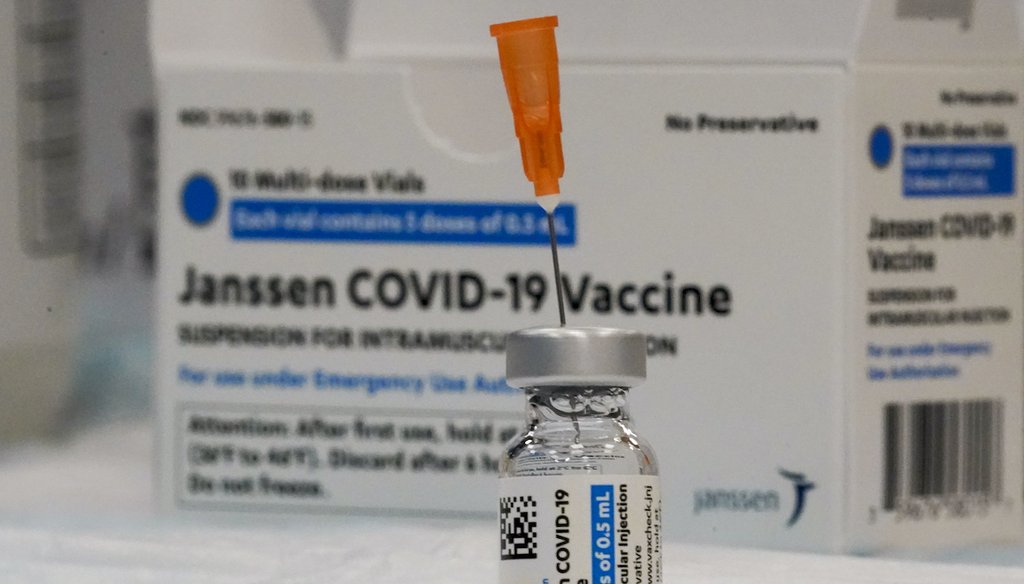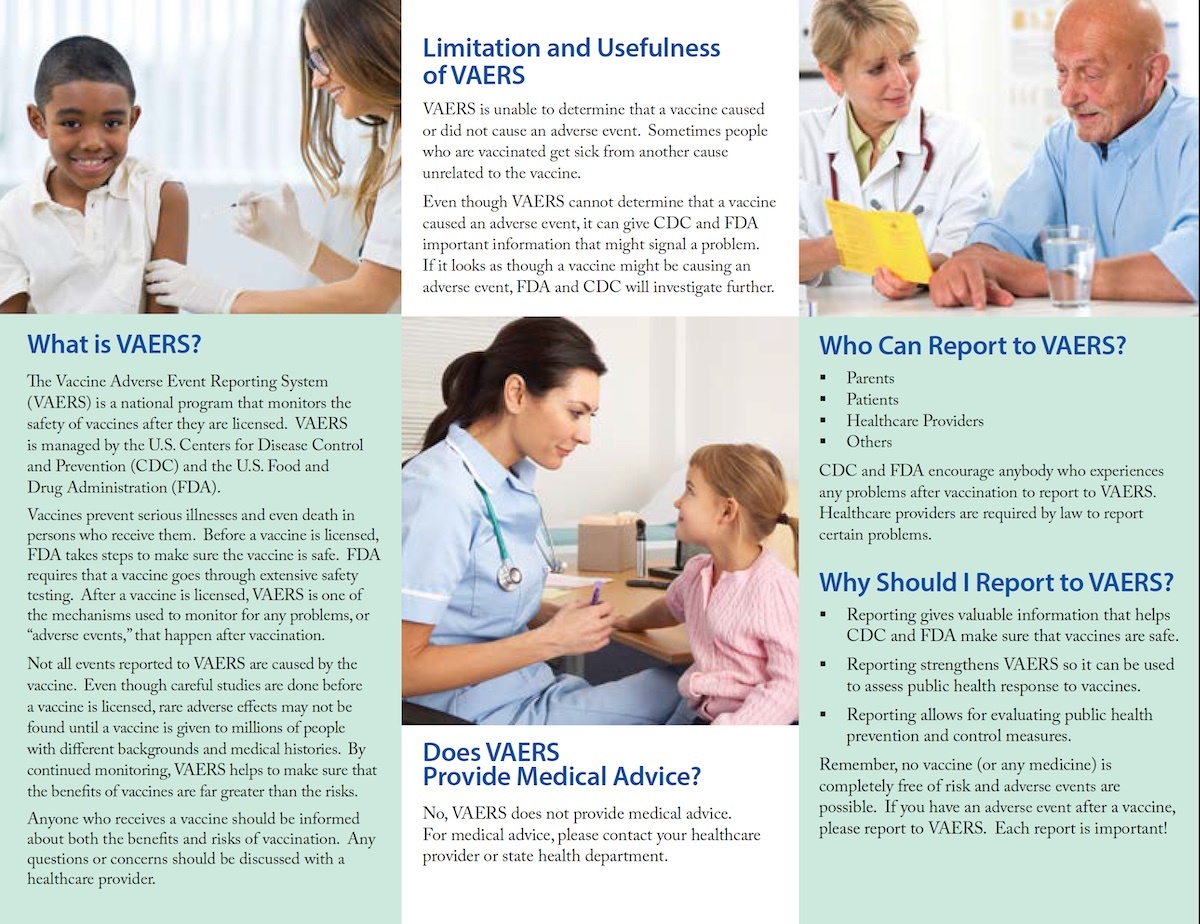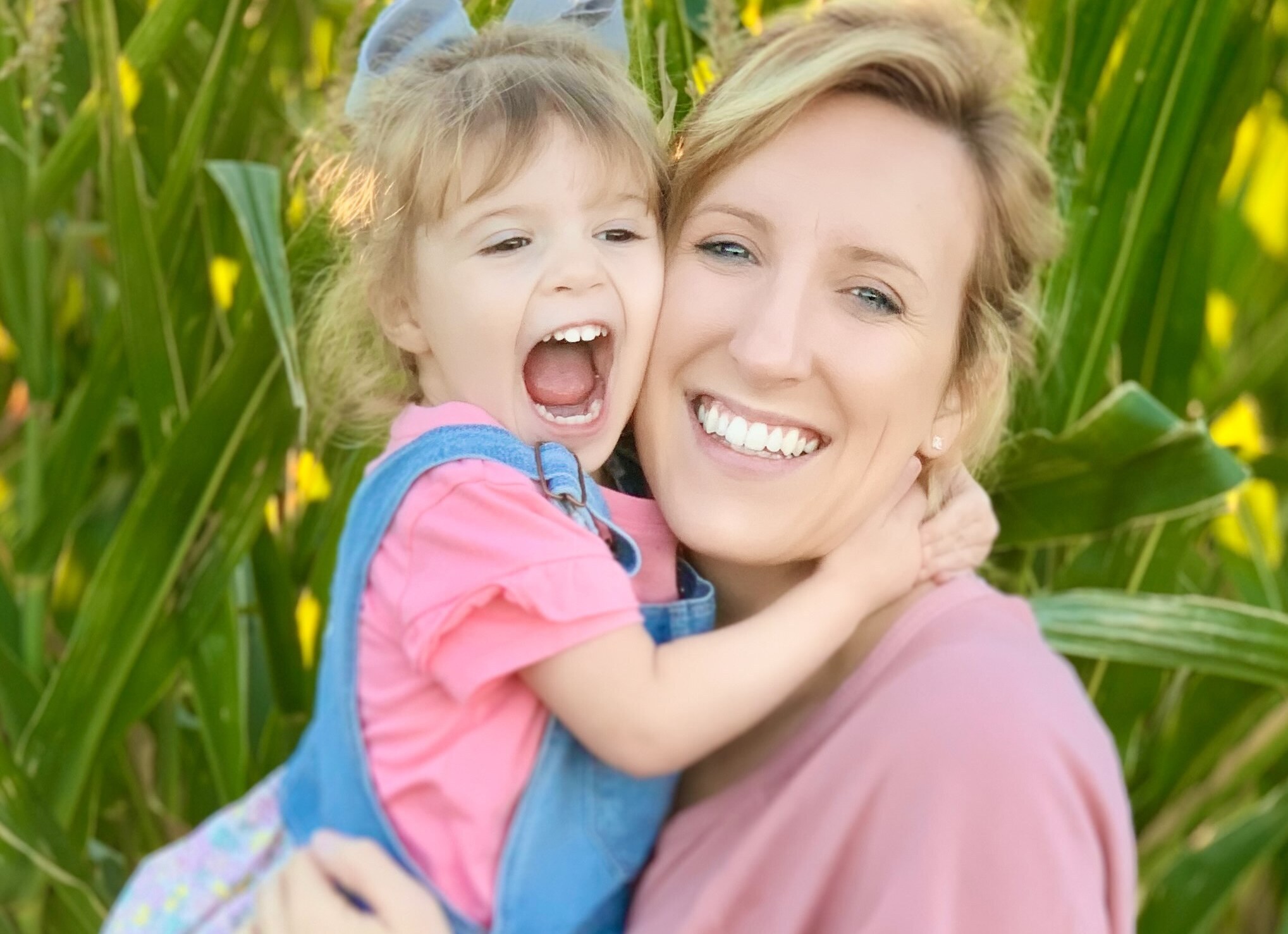Stand up for the facts!
Our only agenda is to publish the truth so you can be an informed participant in democracy.
We need your help.
I would like to contribute

Several states resumed use of Johnson & Johnson's one-shot vaccine April 24, 2021, after a pause to study the risk of blood clots. (AP)
If Your Time is short
-
The federal government’s Vaccine Adverse Event Reporting System helps researchers collect data on vaccine after-effects and to detect patterns that may warrant a closer look.
-
VAERS is designed as an open system, where anyone can submit a report, and the reports are widely accessible. The reports are not verified, and incomplete VAERS data is often used in conjunction with false claims about vaccine safety.
-
The CDC cautions that VAERS results are not enough to determine whether a vaccine causes a particular adverse event.
-
For the COVID-19 vaccines, VAERS has received a flood of reports, and it has become especially potent fuel for misinformation.
An Instagram post says: "6,000% Increase in Reported Vaccine Deaths 1st Quarter 2021 Compared to 1st Quarter 2020."
An article from a media outlet called The Daily Expose carried the headline: "Number of women to lose their unborn child after having the COVID vaccine increases by 366% in just six weeks."
The headline on an article from former GOP congressman Ron Paul’s website, shared widely on Facebook, reads: "Coronavirus Vaccinations Seem to be Causing 50 Times the Adverse Events of Flu Vaccinations after Just the First of Two Shots."
We’ve fact-checked these claims and several others about the purported effects of the COVID-19 vaccines, and we found them to be false.
But the numbers the claims draw from aren’t made up. They come from the Vaccine Adverse Event Reporting System, or VAERS, an official federal database. It’s run by the Centers for Disease Control and Prevention, the agency that develops the government’s public-health guidance, and the Food and Drug Administration, which monitors new medicines and vaccines.
Sign up for PolitiFact texts
For 30 years, VAERS has been critically important for the two health agencies and researchers to collect and analyze data on vaccine after-effects and to detect patterns that may warrant a closer look.
But VAERS is unlike other official government data sources. Numbers from other agencies, like the Bureau of Labor Statistics or the Census Bureau, flow through consistent reporting channels and get screened by statisticians and analysts before they are made available to the public. VAERS, on the other hand, is an open-access system.
It’s designed so that anyone — parents, patients and health care professionals — can freely report any health effects that occur after a vaccination, according to the CDC, whether or not those effects are believed to be caused by the vaccine. The reports are not verified before they’re entered into the database. But anyone with a computer can search the data, download it, sort through the numbers and interpret them as they wish.
That makes VAERS fertile ground for vaccine misinformation that spreads widely on social media and elsewhere. Even though VAERS warns its users that reports should not be used on their own to determine whether a vaccine caused or contributed to a particular illness, many who tap into the system do that anyway, citing these government statistics to justify broader conclusions about what they consider the dangers of vaccines.
That’s what happened to Heather Simpson, a Texas podcaster and freelance writer. When she watched an anti-vaccination documentary in 2015 called "The Truth About Vaccines," Simpson said listening to the doctors and parents in the film made her fear what vaccines might do, especially to her own future children — her daughter was born in 2017.
"It was mainly the parents who said their kid stopped talking the day after their vaccine, and their kid died the night of the vaccine, like (sudden infant death syndrome)," Simpson told PolitiFact. "It made it hard for me, not knowing the context, to believe that it was anything but the vaccines."
It’s a ridiculous system, she now says. "Somebody said that their hair dye was messed up from a vaccine. So, I now know the difference, but yes, I did believe in the VAERS."
The creation of VAERS was well-intentioned, born out of concerns about the potential health risks posed by vaccines and the potential legal liability surrounding them.
From the late 1950s into the ’70s, pharmaceutical companies routinely faced lawsuits from families whose children had experienced adverse health events after being vaccinated. The difficult issue in these cases was trying to prove, or disprove, whether the vaccine caused the harm.
At the same time, there was no nationwide policy governing drug manufacturers’ ultimate liability, Seth Mnookin wrote in his book "The Panic Virus: A True Story of Medicine, Science and Fear," a history of modern vaccine use.
"The lack of comprehensive regulations meant that all the parties involved, from patients and pediatricians to drug manufacturers and the federal government, were unsure of their rights and obligations under existing immunization mandates," Mnookin wrote.
The CDC says the uncertainty was a disaster for their effort to eradicate diseases.
"Damages were awarded despite the lack of scientific evidence to support vaccine injury claims," the CDC says. "As a result of these decisions, liability and prices soared, and several vaccine manufacturers halted production. A vaccine shortage resulted and public health officials became concerned about the return of epidemic disease."
In 1986, Congress passed the National Childhood Vaccine Injury Act to "create a simple, transparent process for dealing with injury claims," Mnookin wrote.
The law established the National Vaccine Program Office to coordinate immunization-related activities among federal agencies. It also required health care providers to disclose known risks to the person being vaccinated or their parents. Manufacturers must compensate those who claim to be injured by vaccines on a "no fault" basis, and must report certain adverse events to the government. That’s where VAERS comes in.
Established in 1990, VAERS works as a "national early warning system to detect possible safety problems in U.S. licensed vaccines," according to the CDC.
"It’s called a spontaneous reporting system. It’s also known as a passive surveillance system," said Dr. Tom Shimabukuro, deputy director of the CDC Immunization Safety Office. "We depend on people to send reports of their experience after a vaccination to the VAERS system."
VAERS accepts all of these reports, regardless of the plausibility of the vaccine causing the event or the clinical seriousness of the event.
Shimabukuro said one of VAERS’s strengths is that it allows the CDC and the FDA to quickly detect safety issues or rare reactions that warrant further study.
Dr. Paul Offit, director of the Vaccine Education Center at the Children's Hospital of Philadelphia, cites the case of a vaccine called RotaShield as an example of VAERS working at its best. In the late 1990s, RotaShield was given to young children to prevent infection from the rotavirus, which causes vomiting and diarrhea in infants and young children.
"There were like 15 case reports of children who had intestinal blockage called intussusception within two weeks of getting the vaccine," Offit told PolitiFact.
"What was odd about that was that they were generally young for intussusception," he said. Usually, children with the condition "were the 5- to 9-month olds, not a 2-month-old. Suddenly this was appearing in the VAERS system."
Dr. Paul Offit, director of the Vaccine Education Center at the Children's Hospital of Philadelphia. (Wikimedia Commons/Karl Withakay)
The unusual pattern served as enough probable cause for a deeper investigation into whether the blockages were linked to the vaccine. And indeed, studies found that the incidence was much higher in children who had the vaccine than those who hadn’t been vaccinated. RotaShield was withdrawn from use.
As with all vaccines, health regulators weigh the risk of potential harm from the vaccine against the benefits of getting the vaccine — or, put another way, the potential harm of not being vaccinated against a disease. The reports in VAERS help them calculate those risks and respond accordingly.
During the early rollout of the COVID-19 vaccine, for example, several cases of a severe allergic reaction called anaphylaxis were reported to the system. Shimabukuro said the CDC was able to quickly quantify that risk.
In addition, VAERS helped alert health officials to a rare type of blood clot called cerebral venous sinus thrombosis in six individuals who received the Johnson & Johnson COVID-19 vaccine. This was a small portion of the 6.85 million people who had received the J&J shot, but it was enough to trigger the CDC to explore a possible link, Shimabukuro said.
After a pause to review the cases, the CDC and FDA recommended resuming use of the J&J vaccine, concluding that given the rare occurrence of blood clots, the benefits of the vaccine outweighed the potential for harm. But they recommended including an advisory about the blood-clot risk, and said they would continue monitoring the issue.
"When we do detect a problem, we have the systems and we have the expertise to assess those problems, and if we confirm that there is a problem and we feel we need to take action and communicate that to the public, we have mechanisms like the Advisory Committee on Immunization Practices to rapidly get that information out there," Shimabukuro said.
VAERS has proven to be an effective tool for the CDC, FDA and researchers skilled at interpreting the enormous volumes of data that the system generates.
So how should the rest of us analyze those numbers?
Offit has a straightforward answer: We shouldn’t.
It’s natural for people to seek out information to safeguard their family’s health and to look to government health agencies for guidance and data. But as the VAERS website itself warns, the reports in the system are not nearly enough to determine whether a vaccine causes a particular health event.
Offit explained that four sets of data are needed to measure whether a vaccine has caused or contributed to an adverse event: vaccinated people who experienced that problem; vaccinated people who didn’t have it; unvaccinated people who had the problem; and unvaccinated people who didn’t.
"What (VAERS) gives you is one piece of information: You had a vaccine, had a side effect," he said. "That in no sense tells you whether or not the side effect was caused by the vaccine. So it’s a noisy system that frankly is more frightening than helpful."
The fear is amplified by anti-vaccine groups and activists who use VAERS’s unverified, incomplete numbers to advance far-reaching claims, Offit said.
PolitiFact has debunked claims like these based on VAERS data over the years:
-
In 2015, Dr. Bob Sears, a pediatrician and anti-vaccine activist, told CNN’s Don Lemon that 3,000 to 4,500 severe vaccine reactions are reported to the CDC every year.
-
In 2017, a website called truthoncommand.com published a headline that said, "Now it’s official: FDA announced that vaccines are causing autism."
-
The group Holistic Health and More stated in a 2019 Instagram post that there was a 4,250% increase in fetal deaths from the flu shot.
With three new COVID-19 vaccines now in circulation, health officials are encouraging people to report into the system, said Dr. William Moss, executive director of the International Vaccine Access Center at Johns Hopkins Bloomberg School of Public Health. Moss said it’s critically important to collect such reports to detect any rare, potentially adverse events.
But he acknowledged that for the COVID-19 vaccines, VAERS has become especially potent fuel for misinformation. In addition to the stress of the global spread of the disease, every aspect of the disease — from questions about its origins to vaccination policies — has become politicized, and the new mRNA vaccine technology and the push to vaccinate more people quickly have made it harder for some to trust.
In addition, the volume of COVID-19 vaccine adverse event reports dwarfs other vaccination categories, creating a huge pool of raw data and distorting comparisons. A check of the database on April 23, the latest update, turned up more than 118,000 reported events for the COVID-19 vaccines, ranging from heart attacks and seizures to septic shock and COVID-19 itself. Some reports included deaths. The events that appear most often are the ones scientists knew about: minor, temporary effects such as fatigue, chills, fever and headache.
Moss explained one way VAERS can amplify fears about the COVID-19 vaccine in particular. Most vaccinations are given to a small segment of the population: young, healthy children, who are generally less likely to have health problems afterward. But the COVID-19 vaccine is given to a much larger group — all Americans 16 and older are eligible now. And the earliest recipients included a large number of elderly patients and adults with preexisting health problems.
"When you’re giving a COVID-19 vaccine to elderly adults, there are going to be people who die shortly after vaccination because they would have died anyway," he said. "So it exacerbates the situation."
Proponents of vaccination are especially concerned about the impact of misinformation on people of color.
Some online campaigns have specifically targeted the Black community and pushed the message that vaccines are a tactic of racist experimentation and control. That plays to historical suspicion of government health initiatives among some Black people as a result of the abusive 40-year Tuskegee Experiment and persistent racial disparities in health care.
Moss said his colleagues at IVAC, including researcher Lois Priver-Dumm, have been working with the Black community in Baltimore, particularly through religious and faith leaders, to ease those suspicions. "An important strategy is to engage with the community leaders, the influencers in the community," he said.
IVAC also works with religious leaders to debunk myths that the vaccine has been made with aborted fetal tissue, which is a concern among abortion opponents.
No matter where the concerns come from, Moss said, the key is to listen attentively to people’s doubts.
"If the concern is dismissed, that turns people off," he said. "So you need to listen to what people’s concerns are, listen to what their questions are. A lot of the questions are around the safety of the vaccine. A lot of the questions are around people saying that the vaccines were just developed too quickly. Those can be addressed in a dialogue and really having trusted sources of information," Moss said.
That’s what made the difference for Simpson, the Texas mom who had turned to VAERS after becoming wary of vaccines. Her perceptions began to change after she read a book by Offit called "Vaccines and Your Child: Separating Fact from Fiction."
She also credits a book by Sears, the anti-vaccine pediatrician, that, perhaps ironically, helped her to understand vaccines better by breaking down their ingredients.
"The first part of his book shows how safe a lot of the vaccines are, and how rare the side effects are," Simpson said. "Knowing that he’s anti-vax and he’s still saying that really kind of pushed me to think."
Simpson did more research and spoke to health experts, including Offit himself, and the two became friends. She’s now actively using her social media platforms to share reliable vaccine statistics and her personal journey. Her daughter received her first set of vaccines, and Simpson got the first dose of the Pfizer COVID-19 vaccine in mid-April. She said she had a treatable allergic reaction to the shot and will be prepared with Benadryl for the next dose.
Simpson said that while people may have legitimate questions about vaccine safety, they should heed the advisory that’s repeated across VAERS: that when an adverse event like an autism diagnosis is reported as occurring after a vaccination, it doesn’t mean that the vaccine caused it. Simpson pointed out that there are also unvaccinated children who’ve been diagnosed with autism.
"Read the actual facts. You can’t get around that," Simpson said. "You can feel whatever you want to feel, but you can’t get around the facts."
Our Sources
PolitiFact, COVID-19 vaccines have not led to 6,000% increase in patient deaths, as post suggests, April 6, 2021
The Daily Expose, Number of women to lose their unborn child after having the COVID Vaccine increases by 366% in just six weeks, March 31, 2021
Ron Paul Institute, Coronavirus Vaccinations Seem to be Causing 50 Times the Adverse Events of Flu Vaccinations after Just the First of Two Shots, Jan. 6, 2021
PolitiFact, list of VAERS fact checks, accessed April 8, 2021
VAERS, Report an Adverse Event, accessed April 9, 2021
Voices for Vaccines, How I Went From Dressing Up As Measles to Hoping for My COVID Vaccines, April 28, 2021
PolitiFact, Deaths after vaccination don’t prove that COVID-19 vaccine is lethal, Feb. 16, 2021
Seth Mnookin, The Panic Virus: A True Story of Medicine, Science, and Fear (p. 147, 148). Simon & Schuster. Kindle Edition.
CDC, The National Childhood Vaccine Injury Act, accessed April 15, 2021
About VAERS, accessed April 15, 2021
Phone and email interview with Dr. Tom Shimabukuro, Deputy Director of the CDC Immunization Safety Office, April 16, 2021
PolitiFact, Deaths after vaccination don’t prove that COVID-19 vaccine is lethal, February 16, 2021
Jama Insights, Reports of Anaphylaxis After Receipt of mRNA COVID-19 Vaccines in the US—December 14, 2020-January 18, 2021, February 12, 2021
CDC Emergency Preparedness and Response Health Alert, April 13, 2021
FDA News Release, FDA and CDC Lift Recommended Pause on Johnson & Johnson (Janssen) COVI-19 Vaccine Use Following Thorough Safety Review, April 23, 2021
Phone interview with Dr. Paul Offit, Director of the Vaccine Education Center at the Children's Hospital of Philadelphia, April 16, 2021
PoltiFact, What CDC statistics say about vaccine-related illnesses, injuries and death, Feb. 3, 2015
PoltiFact, No, the FDA didn't hide information linking vaccine to autism Dec. 19, 2017
PolitiFact, Instagram post falsely says flu shot causes fetal death, October 29, 2019
Phone interview with Dr. William Moss, executive director of the International Vaccine Access Center at Johns Hopkins Bloomberg School of Public Health, April 23, 2021
VAERS Data, accessed April 14, 2021
History.com, Tuskegee Experiment: The Infamous Syphilis Study, December 15, 2020
Medical News Today, Racism in healthcare: What you need to know, September 16, 2020
PolitiFact, Answering question, concerns about the coronavirus vaccines, April 14, 2021
PolitiFact, Ask PolitiFact: How can COVID vaccines be safe when they were developed so fast? March 29, 2021


















